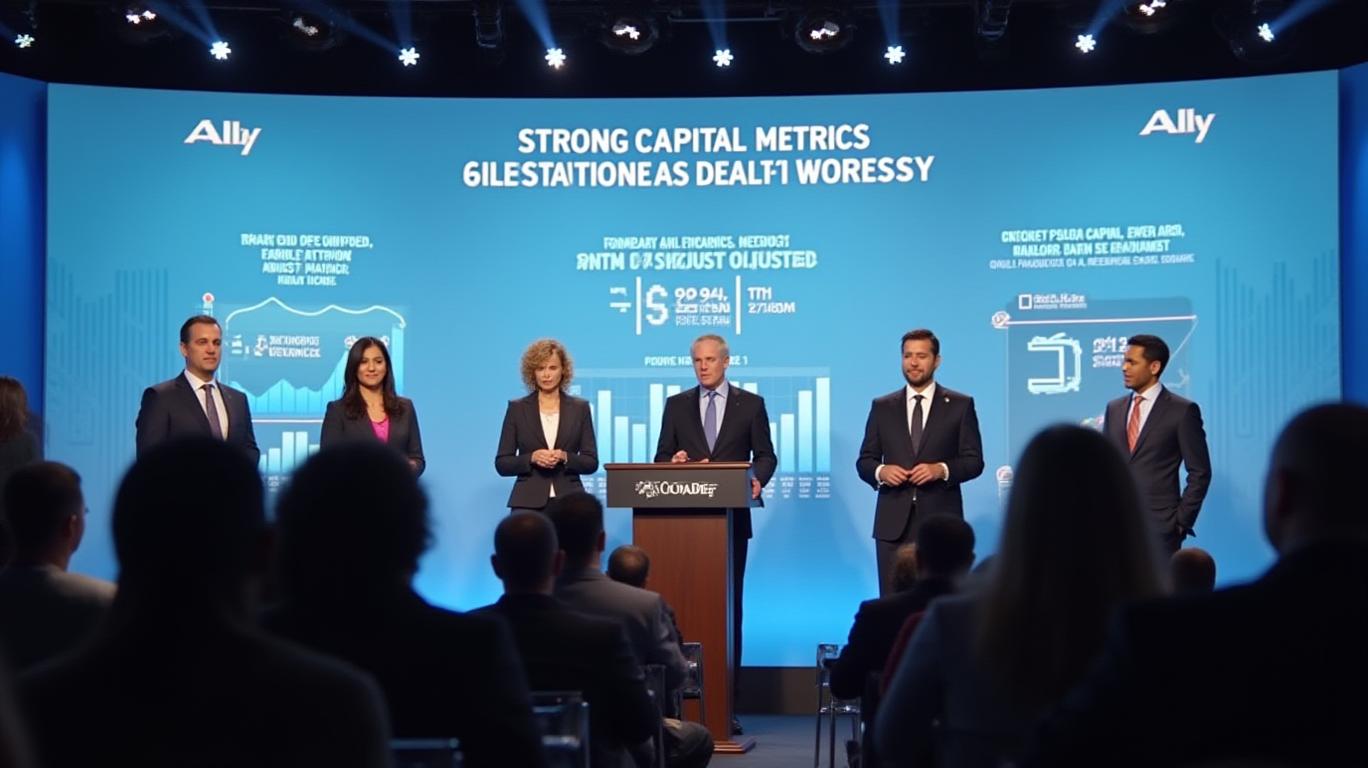Ally Financial: Mixed Q1, Weak Capital an Increasing Focus
Ally Financial’s Q1 2025 earnings report painted a nuanced picture of resilience amid strategic challenges. While the company strengthened its capital position through asset sales and disciplined risk management, lingering concerns about its adjusted capital metrics and uneven credit trends suggest investors must remain cautious. Let’s dissect the numbers to determine whether Ally’s moves are enough to offset growing risks.
Capital Metrics: Strengths and Shadows
Ally’s Common Equity Tier 1 (CET1) ratio rose to 9.5% in Q1, with a pro forma boost to 9.7% following the sale of its credit card business on April 1. This transaction added 40 basis points to CET1, underscoring the benefits of divesting non-core assets. However, the fully phased-in AOCI-adjusted CET1 fell to 7.5%, down from the prior quarter’s 7.3%, reflecting the lingering impact of unrealized securities losses.
The $4.6 billion sale of lower-yielding securities—though generating a pretax loss of $495 million—achieved strategic goals: reducing interest rate risk and shortening the portfolio’s duration. These moves aim to stabilize capital and boost net interest margins (NIM), but the near-term hit to earnings highlights the trade-offs in Ally’s repositioning strategy.

Credit Quality: Progress, but Not Without Hurdles
On the credit front, Ally reported encouraging trends. The retail auto NCO rate dropped to 212 basis points, its first annual decline since 2021, driven by better pricing, underwriting discipline, and stabilized used vehicle prices. However, the 30+ day delinquency rate rose 11 basis points year-over-year, despite a 69-basis-point quarterly improvement. Management attributed this to intentional servicing actions—such as delaying modifications to reduce long-term losses—that temporarily inflated delinquency churn.
While vintage delinquency trends showed stronger borrower repayment activity (73% higher full payments in delinquent tiers compared to 遑2019), the year-over-year uptick in delinquencies underscores lingering macroeconomic pressures.
Strategic Priorities: NIM and Capital Allocation
Ally reaffirmed its 3.4%–3.5% full-year NIM guidance, relying on higher-yield reinvestment from its asset sales and securities repositioning. The company also emphasized its goal of achieving a mid-teens return on equity (ROE) through core franchises like dealer financial services and corporate finance.
Despite maintaining its $0.30 quarterly dividend, Ally paused share repurchases, opting to retain flexibility as it navigates regulatory buffers and capital needs. This cautious approach aligns with its focus on stabilizing AOCI-adjusted metrics, though it may disappoint investors seeking near-term returns.
Risks and the Market’s Response
Ally faces headwinds from macroeconomic uncertainty, including trade policy volatility and competitive pressures in auto lending. Additionally, the unwinding of post-pandemic credit curtailments could strain margins if borrower behavior deteriorates.
The market’s skepticism is evident: Ally’s stock has underperformed the S&P 500 by 15% over the past year, reflecting investor anxiety about its capital trajectory and uneven credit metrics.
Conclusion: A Hold, With Conditions
Ally Financial’s Q1 results reveal a company navigating a tightrope between strategic progress and persistent risks. Its strong pro forma CET1 (9.7%) and improving credit quality metrics—particularly in retail auto—suggest resilience. However, the AOCI-adjusted CET1 (7.5%) remains below pre-pandemic levels, raising questions about its long-term capital adequacy.
While management’s focus on NIM expansion and ROE targets is commendable, investors must monitor whether the securities repositioning and credit card sale dividends translate into sustained margin growth. Until Ally demonstrates consistent improvement in its AOCI-adjusted metrics and stabilizes year-over-year delinquency trends, the stock appears better suited for a hold rating.
For now, Ally’s mixed results underscore a reality: its success hinges on balancing disciplined capital management with the volatile demands of a post-pandemic economy. The jury remains out, but the path to mid-teens ROE is anything but straightforward.


_442a2dcc1749832873286.jpeg)
_e68fac6d1749831664430.jpeg)





